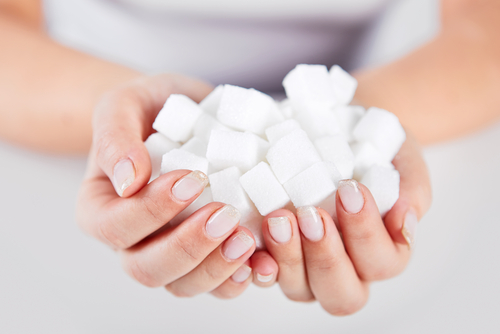By Kathleen Regan, ND
Insulin resistance is a condition where cells become less sensitive to the hormone insulin, leading to high blood sugar levels. Tests for insulin resistance and high blood sugar can help potentially avoid metabolic health issues. In this blog, we will explore what insulin resistance and high blood sugar are and what tests are used to detect them.
What is ‘Blood Sugar’?
Blood is the amount of sugar/glucose found in your bloodstream. Maintaining healthy blood sugar levels is important for overall health, as high levels can lead to serious complications.
Is It Normal To Have Sugar In The Blood?
A certain level of blood glucose is normal. However, significantly elevated levels can make it difficult for the body to make enough insulin. Our body has developed ways of controlling sugars so that they aren’t too high or too low. A number of things will cause sugar to be released into the blood including food, drink, exercise, stress, dehydration, illness or infection. We use sugar as an energy source. Any signal that the body requires energy can stimulate the release of glucose from our own bodily supply.
How Do I Know If My Blood Sugar Is Too High?
There are several signs that blood sugar is too high including:
• increased thirst and a dry mouth,
• needing to pee frequently,
• tiredness,
• blurred vision,
• headaches,
• unintentional weight loss,
• recurrent infections, such as yeast infections, bladder infections (cystitis) and skin infections.
However, these are signs that blood sugar has been elevated for some time. High levels of sugar in the blood are often diagnosed too late. Our typical measurement, ‘fasting glucose’ or even Hemoglobin A1C, can be insensitive to early changes that affect our ability to absorb glucose. These tests are somewhat insensitive to a condition called insulin resistance, which occurs before impaired glucose absorption (pre-diabetes) or Type II Diabetes.
What is Insulin Resistance?
Insulin resistance, a key factor in Type II Diabetes, is a preventable and manageable condition through dietary and lifestyle adjustments. However, the underlying issues leading to diabetes begin years before conventional blood tests detect any changes. To take a proactive stance, it is crucial to implement early screening methods, such as the fasting blood glucose test, and employ more sensitive thresholds to identify the onset of “insulin resistance.”
When you consume sugars, refined carbohydrates, and high-glycemic-index foods that rapidly elevate blood sugar levels, your body responds by producing insulin. This hormone enables your body’s cells to absorb the sugars present in your bloodstream.
Over time, insulin levels gradually rise in response to heightened blood sugar demands. However, as a cell’s sensitivity to insulin decreases, the efficient removal of glucose from the blood becomes compromised. This condition is referred to as “insulin resistance.”
High insulin levels serve as an early indicator of insulin resistance and prediabetes, potentially manifesting before abnormalities are detected by standard screening tests. In fact, elevations in insulin are associated with:
- obesity
• fatigue after meals
• sugar cravings
• abnormal cholesterol
• high blood pressure
• increased inflammation
• some forms of cancer
Recognizing the symptoms of insulin resistance is crucial for early intervention. To assess this condition, a specific test for insulin resistance can be conducted. By undergoing an insulin resistance test, you can gain valuable insights into your metabolic health and take proactive measures to prevent or manage related complications.
If you experience insulin resistance symptoms or have concerns about your metabolic health, it is important to consult with a healthcare professional for proper evaluation, diagnosis, and guidance.
Understanding Blood Tests for Insulin Resistance & High Blood Sugar
The two tests most commonly run to screen for high blood sugar and diabetes are ‘Fasting Glucose’ and ‘HemoglobinA1C’ or HA1C.
Fasting Glucose: This is a blood test typically done in the morning before you eat or drink anything or after you have fasted for 8-10 hours. It is designed to test for circulating levels of sugar in the blood
HemoglobinA1C or HA1C: This is a measurement of the percentage of hemoglobin to which sugar has bonded due to chronically elevated blood sugar or ‘glycated sugar levels’. It reflects your average blood sugar level over the past three months and is a good long-term measurement of blood sugar control.
Both of these tests have a wide reference range sensitive to detecting pre-diabetes or diabetes. It is possible to apply a preventative approach to health by flagging ‘high-normal’ results rather than waiting until the results become abnormal. Yet, these tests are not sensitive to detecting a growing insulin resistance.
Fasting Insulin Test: This is a blood test typically done in the morning before you eat or drink anything or after you have fasted for 8-10 hours. It is designed to test for circulating levels of insulin in the blood. If insulin remains elevated or at high normal levels despite an overnight fast, we know that the body is becoming more resistant to sugar absorption.
Oral Glucose Tolerance (OGTT) Test: An OGTT takes 2 hours to complete and requires 8 hours of fasting ahead of time. Blood is drawn in the fasting state. You will then consume a sugary liquid. Blood is typically drawn another 2-3x over the next 2 hours. This test also measures fasting insulin and ideally insulin across time. This test is the most sensitive test to identify insulin resistance in ‘real time’ or when you are consuming sugar. We look to see how long it takes for glucose and insulin to return to normal levels.
A fasting insulin test or an OGTT test are not typical tests used to screen for blood sugar imbalance. Yet they are very useful measurements in certain conditions that can be linked to dysregulated blood sugar and insulin resistance.
I recommend a combination of the above tests to anyone experiencing:
• difficulty losing weight,
• fatigue after meals,
• mental fogginess,
• sugar cravings,
• hormone imbalances (such as polycystic ovarian syndrome, infertility, endometriosis, thyroid issues and more),
• abnormal cholesterol,
• high blood pressure,
• increased inflammation
• some forms of cancer
Naturopathic Approach to Detecting Insulin Resistance
It is important to consult a practitioner who can read these blood tests with a preventative medicine lens. Meaning that they can evaluate the results in terms of optimal function rather than just disease. Just because your fasting glucose or HA1C levels are ‘normal’ doesn’t mean they are ideal.
In naturopathic medicine, blood sugar testing is considered a basic health screening tool rather than just a tool for diagnosing diabetes. Diabetes doesn’t typically happen overnight and the signs can often be read in your lab work years earlier! Detecting these changes earlier makes it much easier to treat with basic diet and lifestyle changes. By undergoing a comprehensive insulin resistance test, you can gain valuable insights into your metabolic health and take proactive measures to prevent or manage related complications, such as difficulty losing weight, fatigue after meals, sugar cravings, hormone imbalances, and increased inflammation.
If you suspect you may be experiencing symptoms of insulin resistance it is essential to undergo an insulin resistance test to assess your insulin levels. At Innate Wellness, we offer comprehensive testing to evaluate insulin resistance and provide personalized solutions for improving your health. Don’t let insulin resistance go unnoticed; contact us today to schedule an appointment to test for insulin resistance and high blood sugar levels. Take control of your well-being.
References:
1. Umeno A, Fukui T, Hashimoto Y, Kataoka M, Hagihara Y, Nagai H, Horie M, Shichiri M, Yoshino K, Yoshida Y. Early diagnosis of type 2 diabetes based on multiple biomarkers and non-invasive indices. J Clin Biochem Nutr. 2018 Mar;62(2):187-194. doi: 10.3164/jcbn.17-81.
2. Danaei G, Finucane MM, Lu Y, et al. National, regional, and global trends in fasting plasma glucose and diabetes prevalence since 1980: systematic analysis of health examination surveys and epidemiological studies with 370 country-years and 2. 7 million participants. Lancet. 2011;378:31–40.
3. Zhang X, Gregg EW, Williamson DF, Barker LE, Thomas W, Bullard KM, Imperatore G, Williams DE, Albright AL. A1C level and future risk of diabetes: a systematic review. Diabetes Care. 2010 Jul;33(7):1665-73.
4. Benhalima K, Minschart C, Ceulemans D, Bogaerts A, Van Der Schueren B, Mathieu C, Devlieger R. Screening and Management of Gestational Diabetes Mellitus after Bariatric Surgery. Nutrients. 2018 Oct 11;10(10)
5. Kolb H, Kempf K, Röhling M, Martin S. Insulin: too much of a good thing is bad. BMC Med. 2020 Aug 21;18(1):224.






